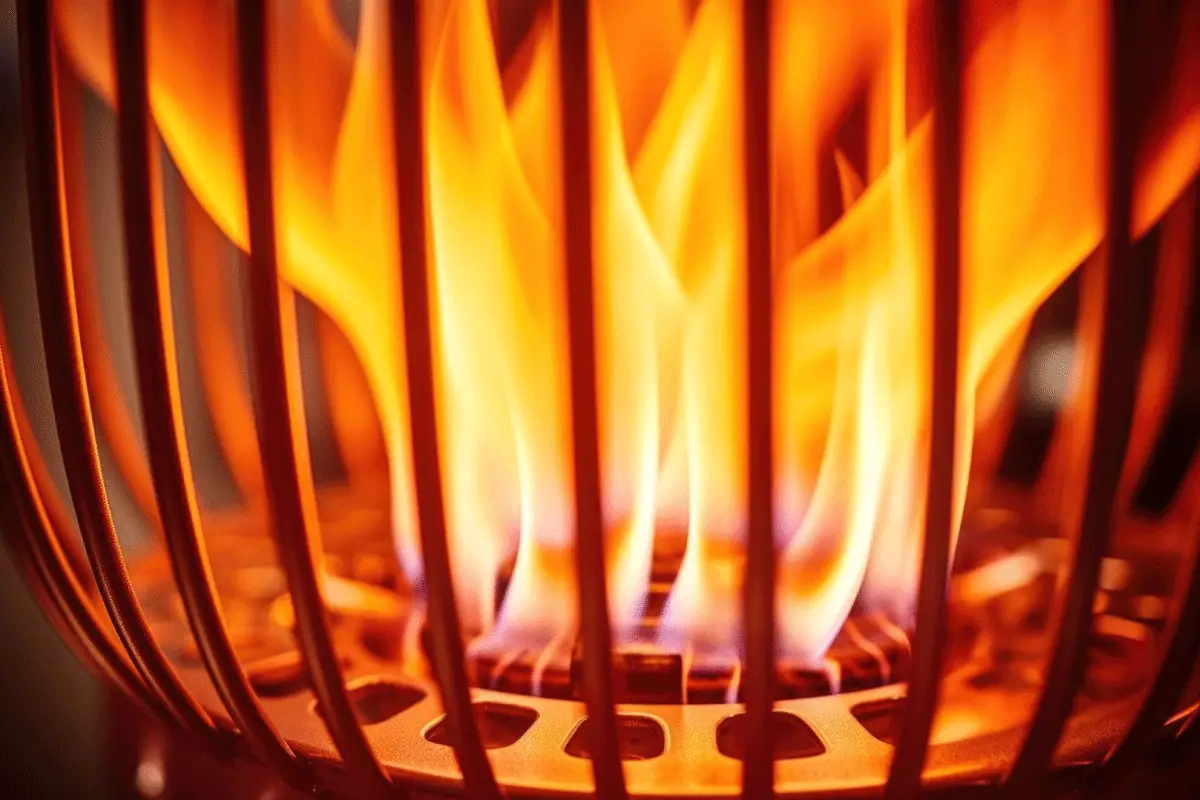Kerosene, a common household fuel, keeps us warm as a fuel for heaters and lights our way during power outages in lamps. But is this trusty liquid a hidden danger?
More specifically: Is kerosene flammable? Or does kerosene explode?
This article explores the true nature of kerosene, separating fact from fiction and ensuring you use it safely and effectively.
Is Kerosene Flammable?
Kerosene is highly flammable and is classified as a Class 3 Flammable Liquid according to national standards. Kerosene can ignite easily in the presence of a spark or open flame.
Does Kerosene Explode?
Kerosene itself is not explosive. It is a flammable liquid that will not explode unless conditions are extreme, typically involving rapid combustion of a gas mixed with air in a confined space.
Here’s an overview of the explosive characteristics of kerosene:
- Kerosene Needs Air to Burn: Explosions require a rapid, contained burning of fuel and oxygen. Kerosene in a liquid state isn’t readily mixed with air.
- Kerosene Vapor Can Be Explosive: Kerosene vapors mixed with air in the right proportions can become explosive. This is why keeping containers sealed and avoiding open flames near kerosene is crucial.
- Container Rupture Can Mimic Explosion: A kerosene container exposed to extreme heat or fire might rupture. The sudden release of burning kerosene and vapors can create a powerful blast, often mistaken for an explosion.

Flash Point of Kerosene
The flash point of kerosene ranges from 100°F (38°C) to 125°F (52°C) depending on the specific grade and refining process. When kerosene is heated to this temperature, it will produce enough vapors to ignite when exposed to a spark or open flame.
What Makes Kerosene Flammable?
Kerosene’s flammability stems from a combination of factors related to its chemical makeup and physical properties. Essentially, the combination of a medium-length hydrocarbon structure, weak chemical bonds, and a low ignition temperature makes kerosene vapors easily susceptible to burning when mixed with air and exposed to a spark or flame.
Here’s a more detailed overview of these factors
Hydrocarbon Chain Structure
Kerosene is a mixture of various hydrocarbons, organic molecules consisting primarily of carbon and hydrogen atoms linked together. These hydrocarbon chains in kerosene have a medium length compared to other fuels.
This chain length plays a role in their:
- Volatility: Medium-length chains tend to vaporize more readily at relatively low temperatures compared to very long chains found in some lubricants. These vapors become the fuel source for combustion.
- Bond Strength: The single bonds between carbon and hydrogen atoms in these hydrocarbon chains are relatively weak. Weaker bonds require less energy to break, making it easier for the kerosene molecules to break apart and form a combustible mixture with oxygen in the air.
Low Ignition Temperature
The ignition temperature of kerosene is typically around 100°F (38°C) to 125°F (52°C). This means it doesn’t take much heat for the kerosene vapors to reach a point where they will readily ignite in the presence of a spark or flame.
Air-Fuel Ratio
For combustion to occur, a specific ratio of fuel (kerosene vapor) and oxygen (from the air) is necessary. The volatility of kerosene allows it to create a flammable mixture with air at relatively low temperatures. When the kerosene vapor concentration in the air falls within this flammable range, even a small spark can trigger ignition.
Frequently Asked Questions
Is kerosene more flammable than gasoline?
No, kerosene is less flammable than gasoline. Gasoline’s lower flash point and higher volatility make it significantly more flammable than kerosene.
Here’s a breakdown of the key differences:
- Flash Point: Gasoline’s flash point is much lower than kerosene, typically between -40°F (-40°C) to -22°F (-30°C). This means gasoline vapors can ignite at much lower temperatures, making it easier to accidentally start a fire.
- Volatility: Gasoline is more volatile than kerosene. It evaporates more readily at room temperature, creating a larger volume of flammable vapors in the air. Kerosene has a higher boiling point and evaporates slower, reducing the immediate concentration of flammable vapors.
Is kerosene as flammable as diesel?
Kerosene and diesel are both flammable liquids, but kerosene is generally considered more flammable than diesel. Kerosene has a lower flash point than diesel, 100°F (38°C) to 125°F (52°C) compared to diesel fuel that’s usually around 125°F (52°C) to 175°F (79°C).
Can kerosene self-ignite?
No, kerosene itself will not spontaneously combust under normal circumstances. Kerosene has an autoignition temperature, which is the temperature at which it will ignite without an external spark or flame. This temperature is typically around 428°F (220°C), which is significantly higher than its flash point.
Can a spark ignite kerosene?
Yes, a spark can ignite kerosene due to its low flash point.
Will water put out a kerosene fire?
No, water will not put out a kerosene fire. Water is denser than kerosene and won’t mix with it. Instead of smothering the flames, water will simply sink below the burning kerosene, potentially spreading the fire further.
Summary
In conclusion, kerosene is highly flammable but not explosive except in extreme circumstances. Kerosene’s low flash point and readily produced vapors make it a fire hazard if not handled with caution. However, when stored properly in a sealed container, kerosene will not readily explode.
Remember: Always prioritize safety when using kerosene – keep it away from heat sources, and remember, for any fire emergencies, call the professionals.
